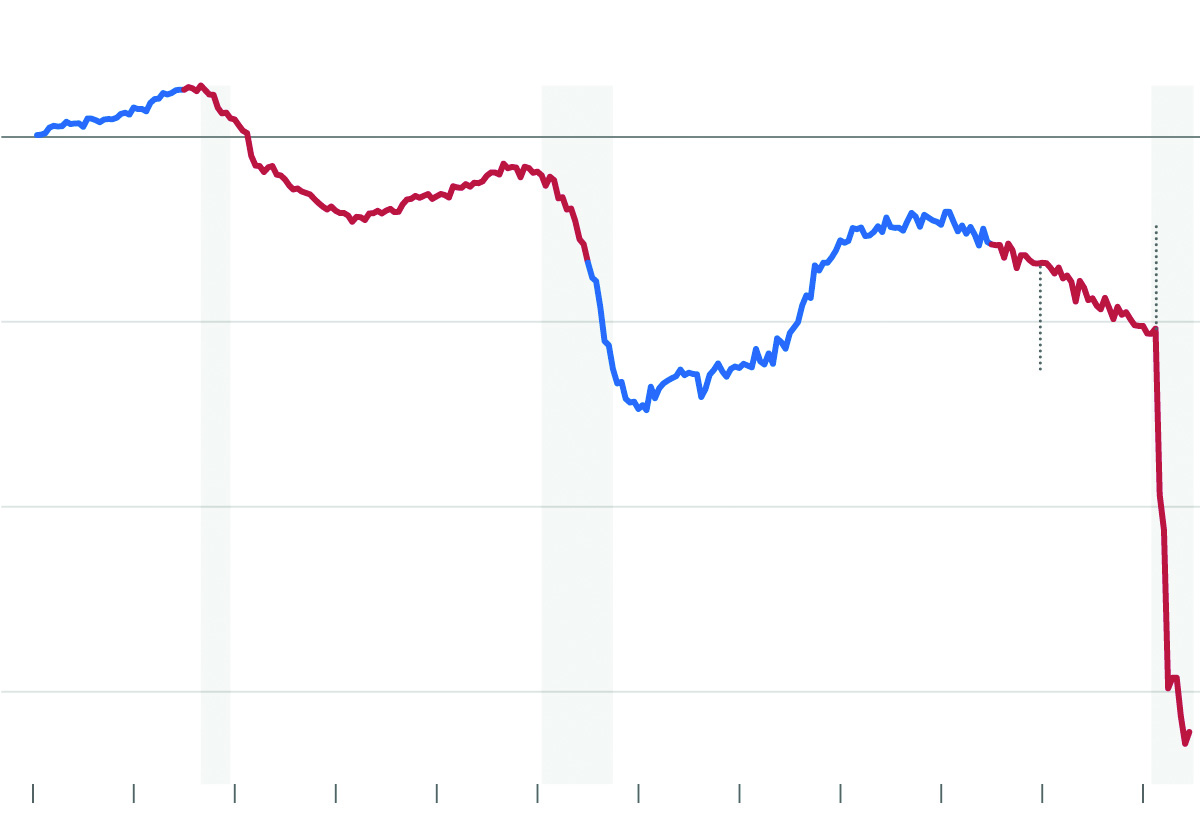Source: "The Year in Charts" by Steven RattnerGraphics by Lalena Fisher - NY Times - 12/31/2020
Over the past four years, President Trump and his allies in Congress have all but obliterated the Republican Party’s self-professed commitment to less spending and smaller deficits, pushing policies that have bloated the federal budget deficit to record levels.
Even before the pandemic ravaged the economy, the deficit — the gap between what the United States spends and what it receives in taxes and other revenue — had ballooned, driven by a $1.5 trillion tax cut and more generous government spending. Then Congress adopted two stimulus packages totaling more than $3 trillion, which will be financed with borrowed money. U.S. debt has grown so much that in 2020 it was projected to surpass the size of the entire annual economy for the first time since World War II.
“I hear a lot of talking about how we can’t afford it,” {Senator Josh Hawley of Missouri} said on the Senate floor on Friday. “I do notice, however, that we seem to be able to afford all kinds of other stuff. We can afford to send lots of money to other governments. We can afford to send all kinds of tax breaks and bailouts to big corporations. But we can’t seem to find the money for relief for working people that the president and the House and the Senate all support.”
Come Jan. 20 {2021}, Republican lawmakers are all but certain to cast themselves as the nation’s fiscal stewards and resurrect their deficit concerns to oppose policies backed by Democrats
They will be reviving those deficit concerns after a historic spending spree by a Republican president whose promises to help struggling farmers, manufacturers and workers have proved hugely popular with voters and reinforced a shift in thinking about the costs and benefits of federal deficits.
The political rethinking about the deficit — especially in times of economic weakness — is a stark change from earlier eras. In the 1990s, President Bill Clinton highlighted his success in cutting the deficit and creating a budget surplus as a political achievement for Democrats. Concerns about excessive federal spending and the national debt also helped fuel the ascent of the Tea Party in the late 2000s, giving rise to a new breed of Republican who succeeded in ushering in austere spending caps that continued to bedevil lawmakers.
Republicans have often worried out loud about the deficit while passing policies that will have the effect of expanding it. For instance, tax cuts that cleared Congress earlier in Mr. Trump’s administration were expected to increase the deficit by $1.9 trillion in the decade through 2028, based on a Congressional Budget Office analysis.
But the party has generally invoked fiscal responsibility to block bigger spending programs.
That line of thinking drew a quick rebuke from the top Democrat in the Senate, who said Republicans cared about the deficit only when it was politically convenient.
“By now, Republican objections over the debt and deficit are comical. They added nearly $2 trillion to the debt for a massive tax cut for corporations and the wealthy — and that was during a steady economy,” Senator Chuck Schumer of New York, the minority leader, said on Thursday.
“Just as a Democratic president is about to take office,” he added, “all of the sudden the deficit-scolds are back.”
Source: "As Some Deficit Hawks Turn Dove, the New Politics of Debt Are on Display" By Jeanna Smialek and Catie Edmondson - NY Times - Jan. 2, 2021

Federal budget balance, 12-month sum, in trillions
Source: U.S. Department of the Treasury via NY Times